The Best Clamp Meters Under 100 Dollars — Buyers Guide, Review, and Comparison
Clamp Meters Under $100 Information
Clamp Meters Under $100 Comparison Table
| IMAGE | PRODUCT | DETAILS | ||
|---|---|---|---|---|
|
Top Pick 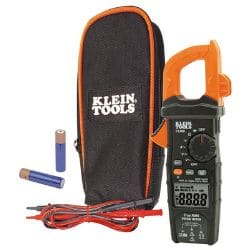
|
Top Pick
|
Klein CL600
|
Features
|
Check Price at Amazon Klein CL600 Review Klein CL600 Review |
|
Best for Low Light Conditions 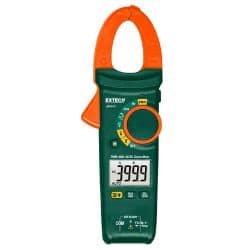
|
Best for Low Light Conditions
|
Extech MA445
|
Features
|
Check Price at Amazon Extech MA445 Review Extech MA445 Review |
|
Best for Temperature Testing 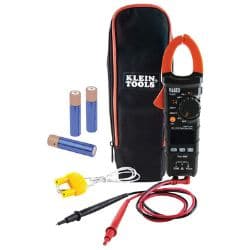
|
Best for Temperature Testing
|
Klein Tools CL380
|
Features
|
Check Price at Amazon Klein Tools CL380 Review Klein Tools CL380 Review |
|
Best for Light Contractors 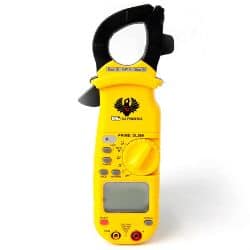
|
Best for Light Contractors
|
UEi DL369
|
Features
|
Check Price at Amazon UEi DL369Review UEi DL369 RK5132K Review |
|
Best for HVAC Professionals 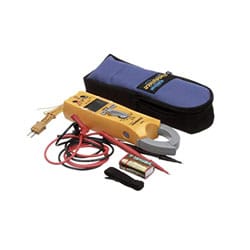
|
Best for HVAC Professionals
|
Fieldpiece SC260
|
Features
|
Check Price at Amazon Fieldpiece SC260 Review Fieldpiece SC260 Review |
|
Best for Novices 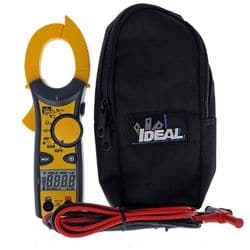
|
Best for Novices
|
IDEAL 61-744
|
Features
|
Check Price at Amazon IDEAL 61-744 Review IDEAL 61-744 Review |
|
Best for Accuracy 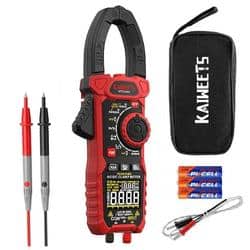
|
Best for Accuracy
|
Kaiweets HT208D
|
Features
|
Check Price at Amazon Check Price at Kaiweets Kaiweets HT208D Review Kaiweets HT208D Review |
Best Clamp Meters Under 100 Dollars Buying Guide
These ultimate budget machines offer similar capabilities, reliability, and robustness to their premium counterparts — but at a price point more suited to the casual user, DIYer, and light contractor.
However, it’s essential that despite the pocket-friendly cost, your clamp meter is suited to your project types — and the electrical draw of your target circuitry. Get it wrong, and the results could be shocking — literally.
This is your complete guide to sub-$100 dollar machines — giving you the trade secrets required to select the perfect affordable unit.
When choosing your machine, consider:
- CAT safety certificate rating.
- TRMS or RMS technology.
- Auto-ranging feature.
- Temperature testing.
- Backlight and/or flashlight.
- NCV detector.
- Memory hold.
- Min/Max function.
- Auto-shutoff.
- Included accessories.
Why Choose a Budget Clamp Meter?
Advancements in micro-electronic technology mean that these crucial tools are now within reach of the casual and home user — with features that were once exclusive to premium-grade units.
Naturally, there are some dodgy import machines out there, hence why it’s essential you’re somewhat selective when choosing your clamp meter. All my top picks above have been selected for their hazard-free design, robustness, and project versatility.
It’s true that features vary across models. However, it’s not unusual to find sub $100 units incorporating high-end specs such as CAT IV safety ratings, backlit LCD screens, non-contact voltage detectors, and accurate TRMS systems.
Sure, in certain specific applications, these budget clamp meters are unsuitable for some trade pros. For example, they don’t boast micro-amp facilities for HVAC flame testing, nor do they feature wireless tech to transfer data to analytical software. But, unless you’re a serious and niche contractor — these characteristics would be overkill anyway.
Therefore, if all you need is a durable, versatile, and hazard-free electrical testing tool — use my buying guide below to pick out your consummate low-cost clamp meter.
How to Choose the Best Budget Clamp Meters
Below are the considerations I feel are necessary when selecting your new testing unit.
CAT Safety Rating
Undoubtedly, the most important factor when differentiating affordable clamp meters.
For an in-depth explanation, check out my complete CAT Safety Rating 101. However, in brief, this specification indicates the loads that your clamp meter can handle, as explained below:
CAT I — Portable electronics such as cell phones and tablets.
CAT II — Mains-wired appliances like drills and refrigerators.
CAT III — Three-phase systems, for example, factory lighting.
CAT IV — High energy sources, such as overhead wires and mains boxes.
Therefore, when purchasing your ideal unit, check that the CAT safety rating equates to your planned projects. Remember that these machines are downward, not upward, compatible — a CAT III machine is fine to use on CAT I and II systems, but a CAT II clamp meter cannot test CAT III circuitry.
Ok, strictly speaking, that’s incorrect. You could use a smaller rated unit on higher loads — but you run the serious risk of blowing your clamp meter, suffering an unpleasant electrical shock, or dropping down dead.
You can buy CAT II-rated meters, but their price point is so similar to CAT III machines that you should go for the higher grade machine — as it will offer increased versatility for future projects.
Hence, for the DIYer and casual user, I suggest opting for a three-phase compatible unit like the Extech MA445 — and for light contractors and serious amateurs, the sub $100 Klein CL600.
TRMS Technology
A feature of all premium machines, but not of their more affordable cousins.
In short, TRMS-grade clamp meters offer higher testing accuracy than their standard RMS counterparts. For a detailed exploration (including some heavy yet accessible physics) take a look at my What Does RMS and TRMS Mean? article.
The truth for the casual user and DIYer is, you don’t always need it.
If your multimeter projects are no more adventurous than testing battery charge, troubleshooting broken connections, and trying to fix Little Jimmy’s remote-controlled car — it’s overkill, opt for a standard RMS meter such as the IDEAL 61-744. However, if you deal with mains wiring, printed circuit boards, or resistor replacement — precision is essential, so go for a TRMS unit like the Klein Tools CL380.
Auto-Ranging
If you choose a clamp meter without an auto-ranging feature — you’re making your life unnecessarily complicated.
This intelligent system automatically selects the perfect range to deliver your testing results in tens, hundredths, or thousandths — meaning you don’t require an encyclopedic knowledge of capacitor ratings or resistor bandings to manually select the correct readout range.
While this is invaluable for novices and electrical newbies, it’s also advantageous to pro users and serious DIYers. Eliminating the need to fiddle with dials and switches, it ensures accuracy while saving valuable downtime.
Temperature Testing
A nice feature, but like the TRMS tech above, it’s not crucial for all users.
Utilizing a thermoprobe — typically as a removable attachment — temperature testing clamp meters allow you to investigate heat levels in engines, microchips, air-con units, and circuit boards.
For many users, this is invaluable — such as in pro or hobbyist automotive and HVAC work. But, if you simply want to search for short circuits or check your third-party Chinese-branded lithium battery is suitable for your laptop — it’s pointless.
If you do need a temperature testing tool — check out the size of the heat range it offers. Some machines measure up to a limit of 752 degrees Fahrenheit — exemplified by the Fieldpiece SC260. Others can scrutinize up to an eye-watering 1832 degrees Fahrenheit, like the Klein Tools CL380.
Illumination
Depending on your electrical projects, you may not always be working in ideal light conditions.
Investigating sub-floorboard wiring, checking basement junction boxes, and troubleshooting broken patio flood lamps at night can lead to issues reading your clamp meter.
So, if your work entails poorly lit environments, consider a machine with a backlight — illuminating the LCD screen and permitting you to make accurate recordings in dim conditions. A perfect example of this is the Klein CL600.
Some machines go one step further. The TRMS boasting Extech MA445 features an in-built flashlight in addition to a backlight. Hence, not only can you easily discern the LCD screen, you can accurately position your testing probes without requiring a secondary light source.
Non-Contact Voltage (NCV) Detector
This feature could be a life-saver — especially for clamp meter novices and non-electrical professionals.
When the meter’s jaws are placed near a wire or circuit with a live voltage, NCV units emit an audible warning together with a visual LED alert. This warns you of possibly dangerous electricity without having to make any form of contact.
You may think you’ve taken all the necessary precautions, such as turning off the mains system — but if you’ve flipped the wrong switch, your wife turns the power back on because her hairdryer isn’t working (true story), or you’re dealing with current-storing capacitors — you may receive an unpleasant and hazardous surprise.
Furthermore, if you’re a trade contractor, it’s an added level of security. When you’re working to a strict timetable, or conscious of expensive downtime, mistakes can occur. Hence, my advice is always to go for a clamp meter with a non-contact voltage detector, like the amateur-focused IDEAL 61-744 or trade-ready Extech MA445.
Memory and Storage
Memories…we simply choose to forget — so sang Barbra Streisand in The Way We Were (Columbia Records, 1973).
Undoubtedly (maybe), Streisand was indicating the difficulty of accurately recalling her clamp meter readings after addressing the troublesome issues of her malfunctioning microphone.
What Babs needed was a machine with a memory feature — such as the Klein Tools CL380. This enables you, at the flick of a button, to display the last measurement taken, as well as the minimum and maximum levels achieved. Thus giving you the time to precisely identify the issue without having to remember what the LCD screen detailed.
Interestingly, Streisand frequently referred to DIY in her hit singles, including:
- Evergreen (1976) — examining the color scheme of Bosch tools.
- Guilty (1980) — expressing her remorse at spending all her rent money on a rotary hammer drill.
- What Kind of Fool (1981) — after buying an HVLP spray gun but not owning a suitable compressor.
- Papa, Can You Hear Me? (1984) — when testing her ear defenders on her father.
- Send in the Clowns (1986) — her bad experience with cowboy contractors.*
*all the above may not be strictly accurate.
Battery Saving
You know how sometimes you’re lying in bed, and the weirdest thoughts enter your mind? This happened to me a couple of weeks ago, when at around 2.00 am, I began wondering why clamp and multimeters don’t come with a corded option — they’re all battery-powered.
Then it dawned on me — if you’re trying to figure out why your mains electricity isn’t working, it’s a bit pointless plugging in your multimeter. But then, my stream of consciousness began to drift to the equally ridiculous question of why these machines use disposable alkaline batteries, and not reusable lithium-ion. And, of course, the answer is if your electricity supply is screwed, you can’t recharge the cells.
This is the bedroom excitement of too many years of marriage.
Anyways, back to my point. As clamp meters are driven by two or three AAA one-use batteries — power saving and monitoring are crucial. You really don’t want to be mid-project surrounded by bare leads, the meter failing due to lack of juice, and then having no idea whether touching that red wire will result in an electric shock.
Therefore, I recommend going for a machine that features a low-battery warning light — such as the Extech MA445. Alerting you to dangerously low residual energy, you can then opt to make your circuit safe before the cells fail completely, or replace them with full batteries.
Furthermore, it’s worth considering a clamp meter with auto-shutoff — like the IDEAL 61-744. This feature deactivates the unit when left idle — saving you valuable battery life.
Accessories and Additional Features
Finally, I’d advise scrutinizing whether the clamp meter arrives with additional accessories or novel functions that are atypical of these testing machines.
While not an exhaustive list, I recommend looking out for:
- Carry pouch.
- Batteries.
- Testing leads.
- Warranty.
- Thermoprobe.
- Hands-free offering rear-mounted magnet.
- Large LCD screens.
Conclusion
With a plethora of machines available below the sub $100 mark — if you choose wisely, you can get yourself a versatile, durable, and most importantly, a safe testing unit without the price tag of high-end models.
When choosing your clamp meter, ensure that it’s suitable for your project types and demands. Check out the CAT safety rating to guarantee it can cope with your job’s energy loads, opt for a temperature feature if you deal with automotives or HVAC equipment, and go for auto-ranging to increase accuracy and save downtime.
Admittedly, they will not suit all users — especially demanding trade professionals. Lacking some project-specific features such as micro-amp testing, some targeted contractors may need to select a more premium unit.
However, if you’re a DIYer, novice user, or light-trade operative — I recommend going for one of the best clamp meters under 100 dollars.
Affordable and Cheap Clamp Meters FAQs
Q: What Is the Best Clamp Meter for the Money?
Boasting TRMS technology, an auto-ranging feature, and certified for CAT IV applications — I suggest that the best budget machine on the market is the Klein Tools CL600.
Q: What Is TRMS?
TRMS — or True Root Mean Square — technology permits clamp meters to deliver more accurate testing results than standard RMS machines. While once exclusively included in premium machines, advancements in budget circuitry have permitted this feature to be seen in cheaper units — such as the Klein Tools CL380.
Q: Are Cheap Clamp Meters Any Good?
Yes, as long as you ensure that your testing machine is suitable for your projects. Consider factors such as TRMS technology, temperature testing, non-contact voltage detecting, and auto-ranging.
Q: Can Cheap Multimeters Measure Temperature?
Yes. Budget clamp meters such as the HVAC-ready Fieldpiece SC260 and DIY-focused Klein Tools CL380 boast a thermoprobe that permits you to investigate heat levels.
Q: What Is NCV Non-Contact Voltage Testing?
Clamp meters that offer non-contact voltage testing alert you to the presence of live circuits without having to make contact with your testing probes. Typically warning you with a visual LED lamp and audible bleep, they offer reassuring safety, protecting you from accidental electrical shocks.
Q: Do I Need a CAT IV Clamp Meter?
Clamp meters that are certified as CAT IV are suitable for testing seriously high energy circuits — such as utility transformers and pole-to-pole wires. If your projects don’t deal with these enormous voltages and current loads, you should opt for a CAT III machine.
For an in-depth explanation of CAT ratings, check out my CAT Safety Rating 101.
